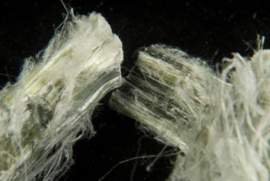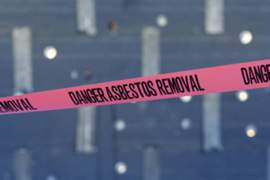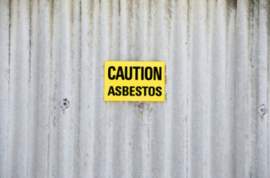
What is Friable Asbestos?

Must Read
Friable asbestos refers to any type of brittle asbestos that can crumble with little force or pressure. Any material that can be broken apart with the hands and contains asbestos is considered friable asbestos and must be removed.
What materials contain friable asbestos?
These materials are easily crumbled with minimal force and have historically contained some form of asbestos:
Plaster – taking advantage of the fireproofing qualities of asbestos, master used to repair and coat structures may slowly erode into a fine dust that will sicken those that inhale it for extended periods of time. Plaster is easily manipulated as a coating but if it is composed of poor materials, it will crumble as previously described. As this is a material that will become friable with time, asbestos is now completely outlawed in plaster.
Pipe insulation – asbestos is both waterproof and insulating. Due to this, asbestos was widely used to seal pipes and insulate water heaters. Like plaster, the use of friable asbestos in pipes has been outlawed, though countless properties prior to 1980 will have pipes with friable asbestos turning into dangerous micro particles.
Joint compound – joint compound is type of plaster used to seal drywall in place. It is easily spread, but older applications have a tendency to degrade. If the joint compound contains friable asbestos, then the minuscule fibers will be released where they will be inhaled and sicken those with extended exposure.
Popcorn (acoustic) ceilings – for a time a mixture of asbestos, plaster and other materials were sprayed on ceilings. This made them sound proof, in addition to fire proof and water resistant. To prevent asbestos exposure, special sealant can be sprayed on their ceilings to prevent the release of friable asbestos. A specialist can remove these ceilings will water and specialized equipment to prevent contamination.
Do I need to remove friable asbestos?
This is not an easy question. Although asbestos in uniformly bad for your health and safety, you may actually do more harm by trying to remove it. If you must remove friable asbestos, you will need the services of a skilled technician that is experienced working with asbestos abatement and will take adequate precautions to protect himself and limit the amount of asbestos that is released into the air. Remember that the fibers of asbestos that can sicken you are much too small see.
Most experts will in fact recommend that if you have friable asbestos in your business or home that you leave it alone. As long as the material is in good condition, there is little reason to disturb it and risk releasing fibers into the air. Houses built as late as 1986 may have asbestos materials in them, due to the fact that even with a ban in place, materials manufactured prior to the ban were still allowed.
You can recognize some friable asbestos through loose fibers in building materials. All visible fibers are composed of smaller fibers that are invisible to the human eye. If you see loose ad exposed fibers, it is your best interest to find an asbestos abatement service as soon as possible.
What is the wrong way to clean up friable asbestos?
As you can imagine with tiny, lightweight fibers, sweeping or using a vacuum cleaner is more likely to force the friable asbestos into the air, where it is an even larger hazard. Even most filter systems will not be able to trap the tiny fibers. Asbestos was used because of its lightweight nature. It is that very nature that makes the fibers from friable asbestos dangerous.
Dry elimination is also not recommended. An asbestos abatement specialist will wet the friable asbestos to prevent debris from escaping. The technician will have specialized equipment and will know the proper means to dispose of the friable asbestos. Buildings that are demolished will have this technician remove all friable asbestos before allowing the tear down to continue. This will be the only situation where total removal of all possible sources of asbestos will be necessary as even indurate material may release asbestos during demolition.
How much pressure is needed to dislodge friable asbestos?
It takes little more than finger pressure to release friable asbestos into the air. This should underscore how dangerous it is to attempt the removal of asbestos yourself. Once friable asbestos is dislodged, even subtle air currents can move asbestos fibers.
Friability describes solids that can be broken down with minimal effort, such as dry clay or chalk. It does not describe indurate materials, such as stone or concrete, which can be broken down but only with serious effort. The fibrous nature of asbestos is due to it being friable in nature, meaning that the mineral is easily broken along one of its planes and as a result will take on its shape after further heating and cooler alters its chemical structure.
How does friable asbestos affect the body?
The tiny fibers of friable asbestos will build up in the lungs and either causes inflammation or malignant cell growth. Most disorders will involve the hardening of lung tissue, followed by diminished lung function. Friable asbestos is a foreign object that resists attempts by the body to break it down. Rather it will become embedded in the tissue and cause the hardening. Fluid is unable to drain out of the lungs and those that develop asbestosis will be prone to coughing up this fluid as well as blood.
Mesothelioma is a cancer of the lining of the lungs, diaphragm and heart that involves pleural tumors, severe coughing, pain and fatigue. The lack of oxygen through diminished lung function will cause many to suffer other ailments, including blood clots. Contact an asbestos lawyer for legal advice and assistance.
How else is one exposed to friable asbestos?
Occupational exposure is the most common source of friable asbestos exposure. This includes veterans, shipyard workers, construction workers and many that might have worked with the material in manufacturing plants. Prior to the dangers becoming apparent, adequate precautions were not taken to protect workers from friable asbestos.


















